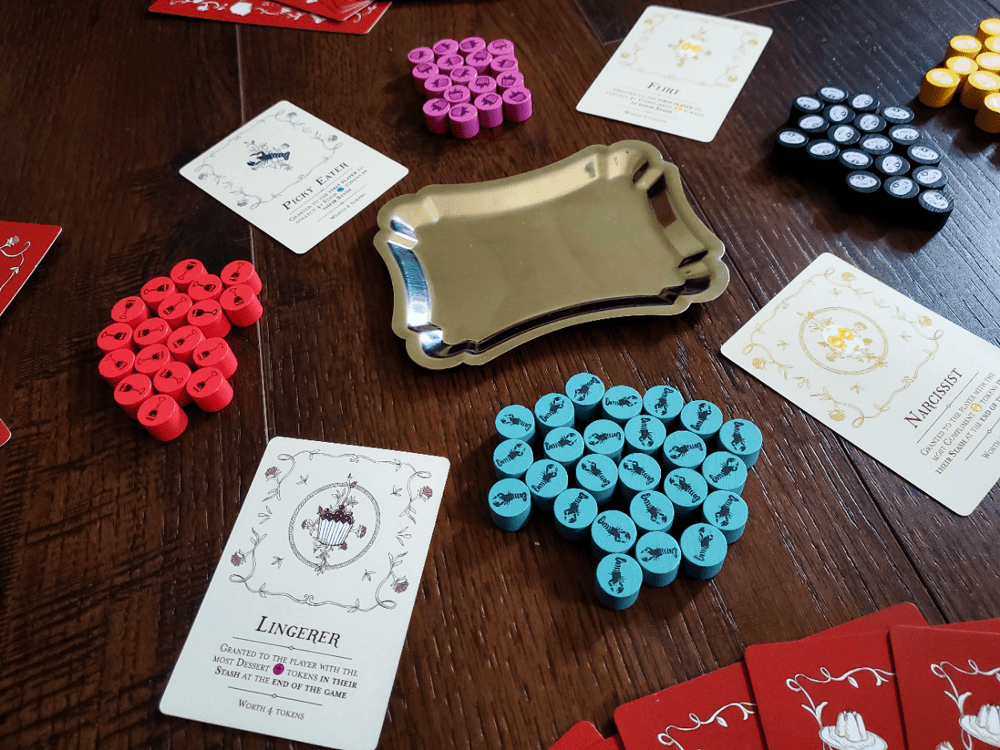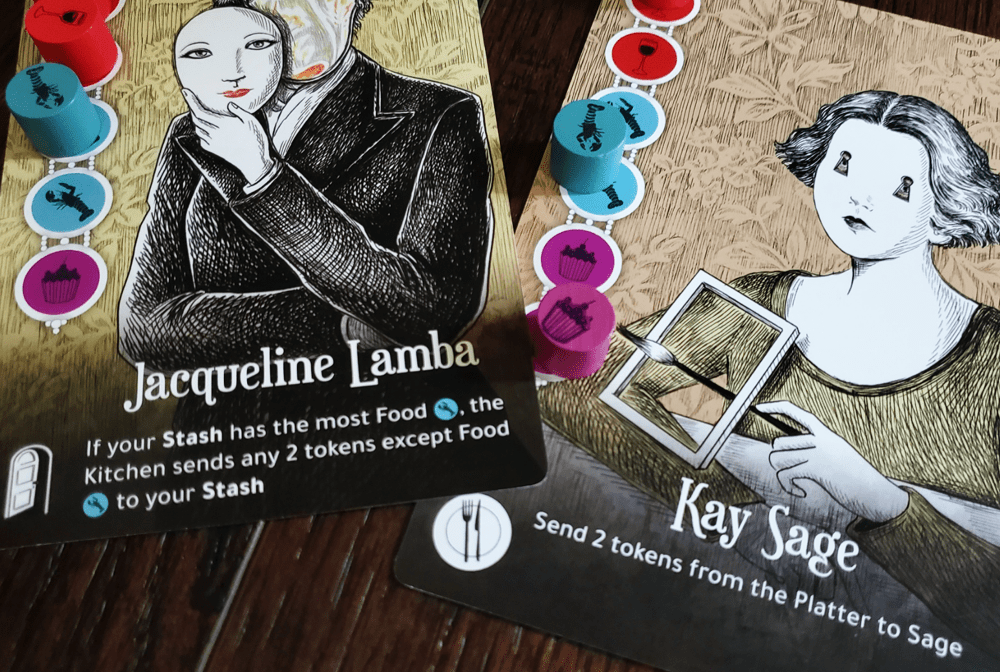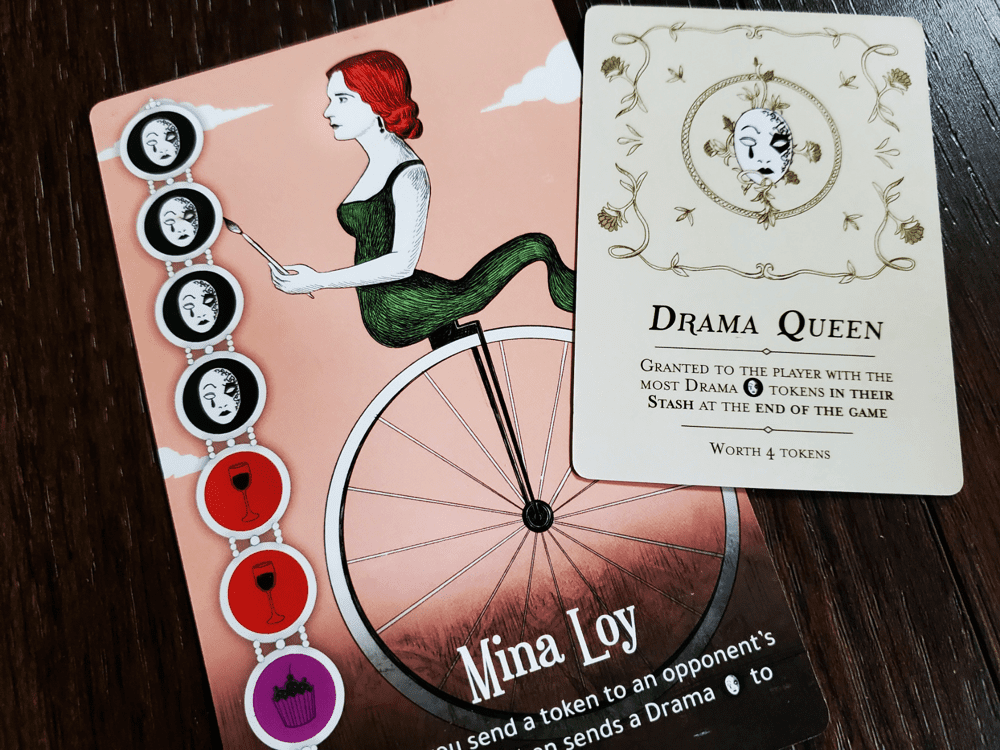When attempting to pull off a successful dinner party, one would be wise to heed the extremes noted by famed surrealist filmmaker Luis Buñuel and avoid them with diligence.
The first regrettable extreme is that of The Discreet Charm of the Bourgeoisie—the dinner party that never gets started. Throughout the film, six friends repeatedly attempt to have dinner together, only to battle the most unexpected obstacles. One never knows, after all, when the military might come a-knockin’ or a funeral might break out in the next room.
The second regrettable extreme is that of The Exterminating Angel—the dinner party from which there is no viable escape. This senior and perhaps more famous film explores what happens when the hoity and the toity are caged in their all-too-mortal aristocratic deficiencies… and sheep.
Surrealist Dinner Party, from Mary Flanagan and Max Seidman, attempts to find that happy middle ground upon which the most bizarrely imaginative minds of the last century can enjoy a mildly competitive meal. This title from Resonym (Mechanica, Phantom Ink) is a table upon a table, a dinner party for two to four players to play out at your dinner party.
We met earlier tonight at the party… Dalí!
The centerpiece for this dinner is an obscenely sturdy silver platter from which players will serve their Guests. Tokens representing Wine, Food, Desserts, Compliments, and Drama scatter around the platter.

Each player receives six grossly large cards from the deck of thirty, either by deal or by draft. First time players should roll with the deal, though the preferred method of distributing the cards, by far, is a draft. The cards feature different artists, masterfully illustrated by Virginia Mori. Each surrealist card also contains a column of icons matching the various Tokens to indicate their interests at the table and an ability of sorts at the bottom. The aim of the game is for each player to seat and fill up their Guests to send them away satisfied.
A fourfold menu placard serves as a player aid and a guide to the game, which is broken up into seven courses. As each course begins, players stock the tray with the various edible bits according to the menu.

For each turn, players choose one of four actions. Seat a Guest in one of three available slots at the silver tray—dismissing another if necessary, Serve one food Token from the tray to a Guest or to simply discard, Send a Compliment or Drama Token to one of your own Guests as well as a neighbor, or Use the Guests’ Plate Abilities.
Compliments and Drama function just like the edible Tokens, but rather than coming from the tray they simply waft out from the kitchen. Different surrealist Guests are looking for a bit of a social stir, and these tokens suffice. As the various Guests are seated around the silver platter in front of each player, there will be another card on either side, though it may belong to another player. By sending out Compliments and Drama, Guests may be receiving something they want… or not. Sending these Tokens around might just waste a useful spot on a Guest card that keeps them from being fully satisfied.
A variety of Plate Abilities shake up the game by, for example, introducing extra Tokens from the kitchen or the opportunity to recover from unwanted Drama. Players can exhaust these abilities once during each of the game’s seven courses, opening the door to interesting combinations throughout the game. Not every card owns a Plate Ability. Some reserve their abilities for the moment of the Guest’s departure, others run perpetually, but all add a pinch of flavor.

As Guests are dismissed and replaced by new Surrealists, any successfully matched Tokens are stashed away to be counted for points after the final course. The only other points come from endgame goals called Faux Pas cards which reward players for eating the most, drinking the most, ruffling the most feathers, or the like. Once these bonuses are claimed, someone is named the ultimate party host.
A very perplexing situation
Surrealist Dinner Party is, in many ways, unlike any game I’ve played. I really like it, but I say so with several critical observations.
This is not a wild party. It is a meal of the most tranquil variety. The game progresses at a measured pace. An entire course can be over in a handful of turns, or if folks linger with Drama and Plate Abilities, perhaps a few more. The first few turns will give you a hanging suspicion that you’re caught in The Discreet Charm of the Bourgeoisie. A Guest or two arrive. A few glasses of wine pass around the table, but where is this going? Then suddenly you’re on to the next course. Decisions must be made—where will everyone sit? Who is the most suitable neighbor for each artist? Which Plate Abilities and Token combinations will best aid the Guests and the table? You’re never stuck, but neither does the pedal ever hit the proverbial metal.

I mentioned earlier the importance of drafting the Guests. Allow me to say it again: drafting is very nearly the key to the enjoyment of this game. Dealing out the cards at random can often lead to imbalance, particularly with those Faux Pas cards at the end. If one player is randomly loaded with narcissistic Guests who love Compliments, they will likely run away with that bonus if it pops up. If two Compliment-based bonuses are revealed, such a game would be over before it ever begins. I speak here from experience. The draft should eliminate the possibility of accidental imbalance by giving players a chance to set the scales before they’re let loose. Plus, planning for possible combos in the draft is subdued fun. Following the draft, the game becomes a matter of execution—how much can you accomplish while still getting every Guest to the table at precisely the right moment?
You will not shout playing Surrealist Dinner Party like you would playing Camel Up! or Sheriff of Nottingham, nor will you hurt your brain like you would playing Sagrada or Finca. It’s just not the same style of play. The dinner party is a completely laid back atmosphere, a light contemplation of timing in which you can acquire a great deal of what you’re looking for with ease—but not everything. That final, elusive piece of the puzzle is where the superior strategy will win. The information is visible throughout the game. You know where you stand, and you only have six Guests and seven Courses to get the job done.
Play moves effortlessly from round to round. The next course of Tokens is added to the tray and the next player takes a turn. There is virtually no delay. The transition is a mere hiccup and play simply continues. It’s almost too smooth. Fear not The Exterminating Angel—you’ll get out of this party right on time.
Speaking of smooth, the tokens are cylindrical. It is unnerving. They roll. Even dumping them out of the bag onto the table could potentially scatter a mess of muted color in every direction. In generosity, I’ve chosen to think they are just uncomfortable enough to be thematic. The screen printing on the Compliment tokens, though, can only be described as an error. The white is hard to see—nearly invisible in most lighting. That’s hardly how you want to receive Compliments!

Nearly every game is competitive, but there have been two distinct responses to Surrealist Dinner Party. My wife and I love these mellow gatherings and the unique aesthetic, so this little gem has become a staple in our two-player collection. Some others, having played the first game without a draft and maybe witnessed the potential imbalance, have left the table somewhat dazed, like I might expect had we watched a Buñuel together. No one has left angry, but not everyone has come back.
Bottom line: You never quite know what to expect when Dalí is at the table with his friends. If a seat at that table interests you, this game might tickle the right fancy. If you’re looking for a relaxing meal with some folks all too comfortable in their eccentricities—with cards large enough to cover your face—Surrealist Dinner Party gets the job done. If you find the surrealist movement fascinating, you’ll enjoy the artwork and the complimentary historical info included in the box. If you’re into heavy miniature silver platters, you certainly won’t be sorry. This dinner party is a fit expression of the genre it represents.
Personally? I’m rather happy this meal has begun, and I’m not itching to get away any time soon.












Add Comment